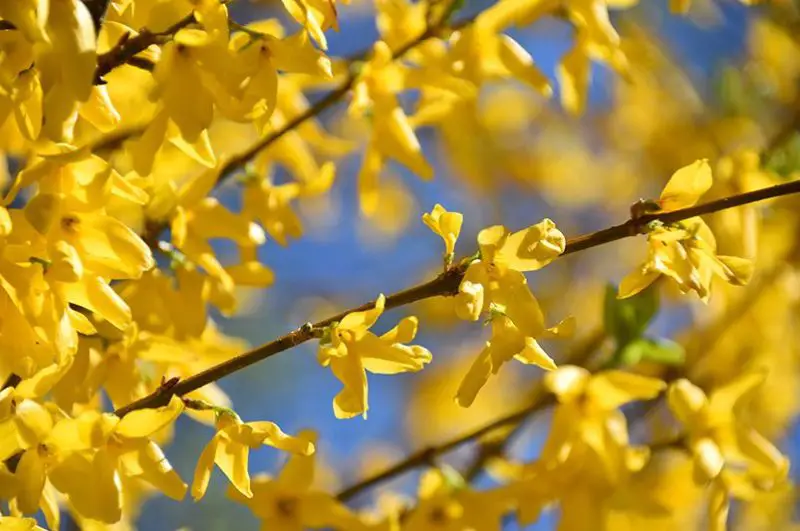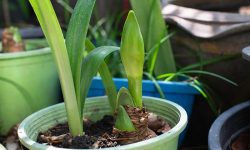Forsythia is one of the earliest signs of spring, known for its stunning yellow flowers that brighten up gardens after the cold winter months. These vibrant blooms appear before the leaves, creating a cheerful display that gardeners love. However, to keep forsythia healthy and covered with bright flowers year after year, proper pruning is essential.
Pruning not only controls the size and shape of the shrub but also encourages vigorous growth and abundant flowering. The timing and technique of pruning play a crucial role because forsythia blooms on old wood. Cutting at the wrong time can remove flower buds and reduce next season’s display. This article will help you understand when and how to prune forsythia for the most brilliant yellow blooms.
Why Pruning Is Important for Forsythia

Pruning forsythia is not just about making it look neat. It serves several important purposes that directly affect flowering and plant health. By removing old, unproductive wood, you stimulate the growth of new shoots that will bloom heavily in the following season.
Pruning also improves air circulation, reducing the risk of fungal diseases that can affect leaves and stems. A well-pruned forsythia allows sunlight to penetrate the inner branches, encouraging healthy growth and better flower development. Without regular pruning, the shrub can become overgrown, with fewer flowers and tangled, woody stems.
Understanding Forsythia’s Growth and Blooming Habits
Before learning when to prune, it is important to understand how forsythia grows and produces flowers. Forsythia blooms on old wood, meaning the flower buds form on stems that grew the previous season. If you prune too late, you risk cutting off these buds, resulting in fewer or no blooms next spring.
New shoots that grow after pruning will not bloom until the following year, so timing is key. By pruning immediately after the flowering period ends, you give the plant time to produce new growth that will set buds for next season.
When to Prune Forsythia for Maximum Blooms
Pruning Immediately After Flowering
The best time to prune forsythia is right after it finishes blooming in spring. Once the yellow flowers fade, new growth begins quickly, and this is the perfect time to shape the shrub. Pruning at this time ensures that you do not accidentally remove buds that have already formed for next year’s display.
Waiting too long, such as pruning in summer or fall, will cut off the developing buds, significantly reducing the number of flowers the following spring.
Avoiding Late-Season Pruning
Pruning in late summer, fall, or winter should be avoided because it removes buds that have already been set on the old wood. Forsythia requires time after pruning to grow strong shoots that will produce next year’s flowers.
Considering Regional Climate Differences
In colder regions, pruning should be done as soon as flowering is complete to allow maximum time for new growth before the next winter. In warmer climates, gardeners still follow the same principle, pruning immediately after flowering to maintain a full and healthy shrub.
How to Prune Forsythia Properly
Correct pruning techniques help maintain a natural shape, encourage healthy growth, and ensure abundant flowering.
Removing Old and Unproductive Wood
Start by cutting out the oldest stems, which are usually thick, woody, and gray in color. These older canes produce fewer flowers and take energy away from younger, more productive shoots. Cutting them back to the base stimulates the growth of strong new stems.
Thinning Crowded Branches
Forsythia can become dense if not pruned regularly. Thinning out crowded branches improves air circulation and allows sunlight to reach the interior of the shrub, promoting healthier growth. Focus on removing crossing or tangled stems to keep the plant open and airy.
Shaping the Shrub for a Natural Appearance
Forsythia looks best when allowed to grow in its natural arching shape. Avoid shearing it into formal shapes, which not only ruins its natural beauty but also reduces flowering. Cut individual stems at ground level rather than trimming all stems evenly across the top. This method keeps the shrub looking graceful and encourages better flower production.
Cutting Back Overgrown Shrubs
If your forsythia has been neglected and has become too large or overgrown, you can rejuvenate it by cutting one-third of the oldest stems back to the ground each year for three years. This gradual method renews the shrub without sacrificing all blooms at once.
Caring for Forsythia After Pruning
Proper care after pruning helps forsythia recover quickly and ensures healthy growth for the next blooming season.
Feeding and Watering After Pruning
After pruning, apply a balanced fertilizer to encourage strong new shoots. Forsythia thrives in well-drained soil and needs consistent watering during dry spells, especially after pruning, to support vigorous regrowth.
Mulching to Protect Roots
Adding mulch around the base of the shrub helps conserve soil moisture, regulate soil temperature, and suppress weeds. Keep mulch a few inches away from the stems to prevent rot.
Monitoring for Pests and Diseases
Forsythia is generally hardy, but keeping an eye out for pests such as aphids or diseases like leaf spot ensures early treatment and protects the plant’s new growth.
Common Mistakes to Avoid When Pruning Forsythia
Pruning mistakes can reduce flowering and affect the shrub’s overall health. One common mistake is pruning at the wrong time of year, especially in fall or winter, which removes flower buds and leads to poor blooms the following spring.
Another mistake is cutting forsythia into formal hedges or balls. Shearing removes many flowering stems and encourages dense, leafy growth with fewer flowers. Over-pruning by removing too many stems at once can also stress the plant and reduce its ability to recover.
Using dull or dirty pruning tools can create ragged cuts that heal slowly and may invite diseases. Always use sharp, clean pruning shears or loppers.
Seasonal Considerations for Forsythia Pruning
Forsythia requires annual pruning to maintain optimal flowering. Light shaping and thinning after each blooming season keep the shrub healthy and full of flowers. Neglected forsythia can still be rejuvenated, but it may take a couple of years for it to return to full blooming potential.
In winter, avoid any major pruning and only remove damaged or broken branches if necessary. Forsythia flowers best when allowed to grow naturally, with proper pruning only when needed.
Encouraging Continuous Bright Blooms Year After Year
Pruning is just one aspect of keeping forsythia vibrant. Providing proper care, including regular watering, fertilization, and mulching, ensures the plant remains healthy and capable of producing a dense display of yellow flowers every spring.
Removing old wood regularly and allowing younger stems to grow freely guarantees a continuous cycle of productive flowering wood. With consistent attention, your forsythia will remain one of the brightest highlights of your garden every year.
FAQs About Pruning Forsythia
When is the best time to prune forsythia?
The best time to prune forsythia is immediately after it finishes flowering in spring, allowing new shoots to grow and set buds for next season.
Can I prune forsythia in winter or fall?
Pruning in winter or fall removes flower buds that formed on old wood, which leads to fewer or no blooms the following spring.
How much should I prune forsythia each year?
Remove about one-third of the oldest stems annually to encourage vigorous new growth while maintaining a natural arching shape.
Can overgrown forsythia be rejuvenated?
Yes, you can cut back one-third of the oldest canes to the ground each year for three years to restore health and improve flowering.
Does pruning forsythia affect next year’s blooms?
Yes, improper timing can remove buds. Always prune right after flowering to ensure bright yellow blooms return the next spring.
Conclusion
Knowing when to prune forsythia is the key to achieving its brightest yellow blooms. Pruning immediately after flowering in spring allows the shrub to produce new shoots that set buds for the next season. Removing old, unproductive wood, thinning crowded branches, and shaping the plant naturally encourage healthy growth and abundant flowers.
Proper aftercare, including watering, fertilizing, and mulching, helps forsythia recover quickly and remain vigorous. By avoiding common pruning mistakes and maintaining regular care, you can enjoy a spectacular display of golden blooms each spring, making forsythia a true standout in your garden.






